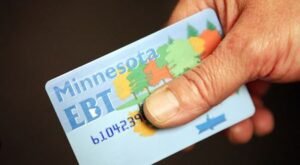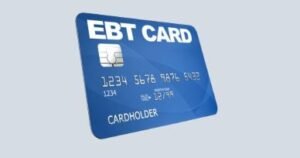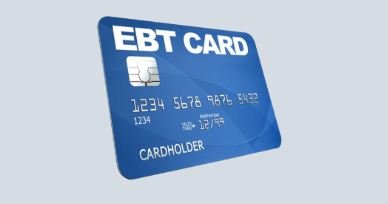The Electronic Benefit Transfer (EBT) card has been a cornerstone of government assistance programs in the United States for many years. By offering support to low-income individuals and families, the Electronic Benefit Transfer Card plays a critical role in providing access to essential resources, including food and cash assistance. However, while the Electronic Benefit Transfer Card can be a blessing for some, it also presents significant challenges for others. In this article, we will explore both the positive and negative aspects of the Electronic Benefit Transfer Card, analyzing whether it truly serves as a blessing or a challenge.

What is the Electronic Benefit Transfer Card?
The Electronic Benefit Transfer (EBT) card is a government-issued card that allows recipients of public assistance programs to access benefits. These benefits are typically distributed through programs like the Supplemental Nutrition Assistance Program (SNAP), which helps low-income individuals and families buy nutritious food, and the Temporary Assistance for Needy Families (TANF) program, which provides cash assistance. The EBT Card functions similarly to a debit or credit card, enabling users to purchase approved goods from participating retailers.
For many families, the Electronic Benefit Transfer Card is a vital lifeline. It ensures that those who are struggling financially can still provide for their basic needs. However, the Electronic Benefit Transfer Card is not without its drawbacks, and for some, it can feel more like a financial burden than a blessing.
The Electronic Benefit Transfer Card as a Blessing for Some
1. Ensuring Access to Nutritious Food
For families living below the poverty line, one of the greatest struggles is ensuring they have enough food to meet their basic needs. The EBT Card offers a solution to this issue by providing access to food through the SNAP program. With the Electronic Benefit Transfer Card, low-income families can purchase fruits, vegetables, grains, dairy, and meats at approved stores. This ensures that even in difficult times, people can maintain a healthy diet without going hungry.
The Electronic Benefit Transfer Card truly becomes a blessing for individuals and families who are struggling to make ends meet. It alleviates food insecurity and helps prevent malnutrition, contributing to better health outcomes. For children, in particular, the EBT Card can be a lifesaver by ensuring that they receive proper nutrition, which can significantly affect their growth, development, and academic performance.
2. Financial Assistance for Other Needs
In addition to food, the Electronic Benefit Transfer Card can also provide cash benefits through the TANF program. These funds can be used to help cover essential living expenses, such as rent, utilities, transportation, and clothing. For families facing financial hardship, the ability to access cash assistance via the Electronic Benefit Transfer Card can provide much-needed relief. It helps families avoid falling into debt, and in some cases, it can prevent homelessness.
The EBT Card serves as a tool for financial stability. It helps families get back on their feet, providing a temporary buffer until they can find employment or achieve self-sufficiency.

3. Independence and Dignity
While government assistance is often stigmatized, the Electronic Benefit Transfer Card allows recipients a degree of independence. With the Electronic Benefit Transfer Card, individuals can purchase their food and manage their finances, much like anyone else. This sense of autonomy can contribute to greater self-esteem and dignity during difficult times. Instead of relying on food banks or charities, recipients can use the Electronic Benefit Transfer Card to make their own purchasing decisions, which can foster a sense of control and empowerment.
The Electronic Benefit Transfer Card as a Challenge for Others
1. Limited Benefits
Despite the advantages, one of the most significant challenges of the Electronic Benefit Transfer Card is that the benefits it provides are often limited. The amount of assistance varies depending on household size, income, and other factors, but in many cases, the Electronic Benefit Transfer Card provides only a small fraction of what is needed to meet a family’s expenses. In high-cost areas or for larger households, the benefits provided may not be sufficient to cover all food and basic living costs.
This limitation can cause ongoing financial strain, and recipients may still struggle to make ends meet even with the assistance of the Electronic Benefit Transfer Card. As a result, the Electronic Benefit Transfer Card can sometimes feel like a temporary fix rather than a long-term solution to financial instability.
2. Stigma and Social Isolation
One of the most common challenges associated with the Electronic Benefit Transfer Card is the stigma that often comes with using it. Many people on public assistance report feeling embarrassed or judged when using the Electronic Benefit Transfer Card in public. This stigma can lead to feelings of shame and social isolation, making recipients reluctant to use the card when they need it most.
This social stigma is especially prevalent in areas where poverty is less visible, and the use of public assistance is considered a sign of failure or weakness. For those who already feel marginalized, the Electronic Benefit Transfer Card can add to the burden, reinforcing feelings of inadequacy or social exclusion.
3. Dependency on Government Assistance
For some individuals, the Electronic Benefit Transfer Card may contribute to a sense of dependency on government assistance. While the Electronic Benefit Transfer Card is designed to be a temporary solution, some recipients remain on assistance for extended periods due to factors like unemployment, disability, or lack of affordable housing. Over time, this dependency can make it more difficult for individuals to transition to financial independence.
Moreover, the cycle of reliance on the Electronic Benefit Transfer Card may prevent individuals from pursuing opportunities that could lead to self-sufficiency, such as education or job training. This can result in a long-term reliance on public assistance, which may not provide the skills or resources needed to improve one’s financial situation.
4. Restrictions and Limited Flexibility
Another challenge of the Electronic Benefit Transfer Card is the restrictions placed on its use. While the card can be used to purchase food, it cannot be used for non-food items, alcohol, tobacco, or prepared meals in most cases. For recipients who need assistance with other basic needs, such as personal hygiene products, cleaning supplies, or transportation, the Electronic Benefit Transfer Card offers no flexibility.
These restrictions can lead to frustration, especially for families who are already struggling to meet their basic needs. The lack of flexibility can create a sense of limitation, as individuals are not able to use the assistance for all the necessities that they require.

Conclusion: A Blessing for Some or a Challenge for Others?
The Electronic Benefit Transfer (EBT) card is undoubtedly a blessing for many low-income families, providing them with the resources needed to access food and financial support during difficult times. It offers relief, independence, and the potential for stability, serving as a crucial tool for families in need. However, for others, the Electronic Benefit Transfer Card can be a challenge. The limited benefits, social stigma, and dependency it can create make it less of a blessing and more of a financial struggle.




